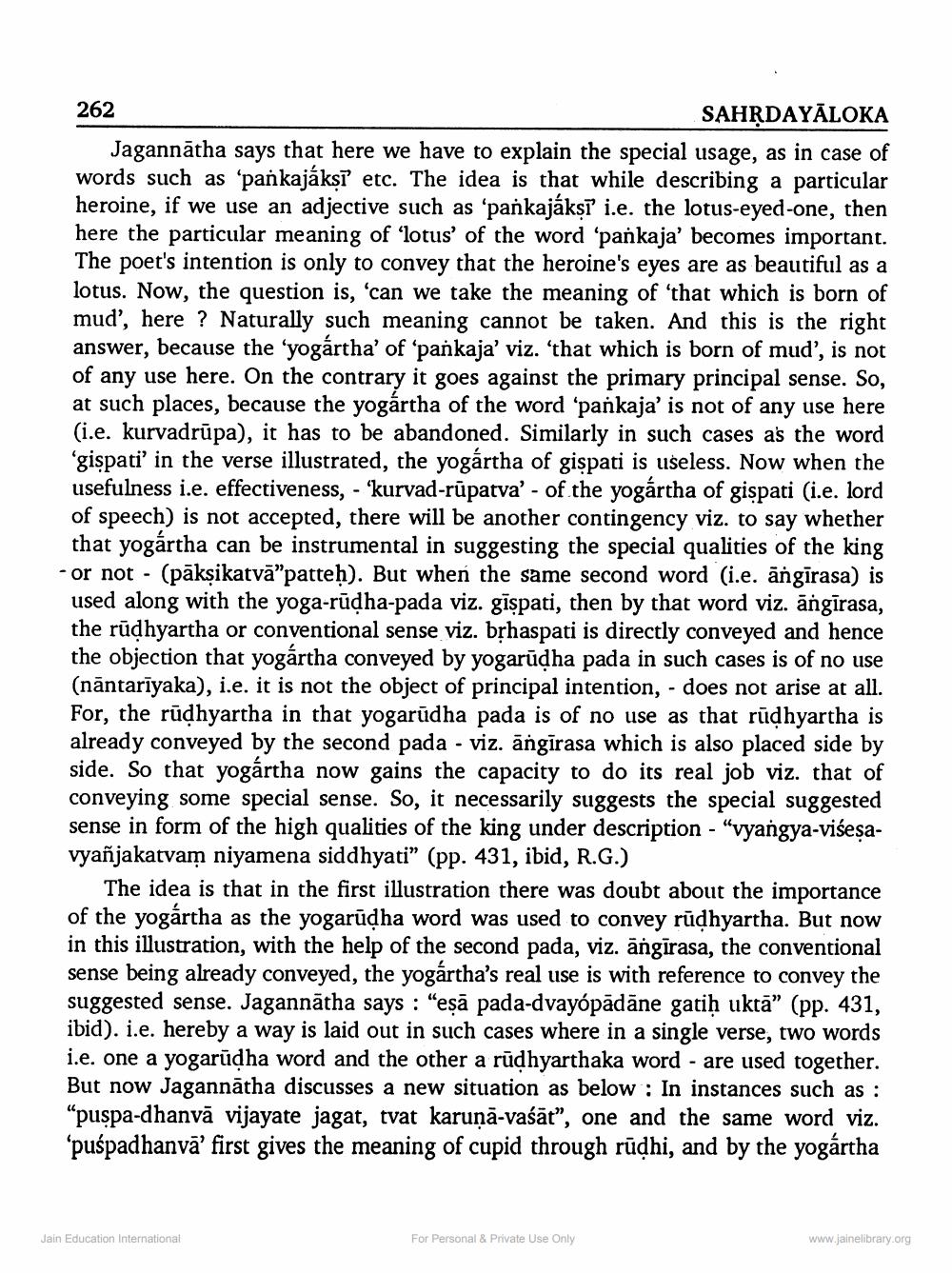________________
262
SAHRDAYĀLOKA Jagannātha says that here we have to explain the special usage, as in case of words such as 'pankajákṣī etc. The idea is that while describing a particular heroine, if we use an adjective such as 'pankajákşi i.e. the lotus-eyed-one, then here the particular meaning of 'lotus' of the word 'pankaja' becomes important The poet's intention is only to convey that the heroine's eyes are as beautiful as a lotus. Now, the question is, 'can we take the meaning of 'that which is born of mud', here ? Naturally such meaning cannot be taken. And this is the right answer, because the 'yogártha' of 'pankaja' viz. 'that which is born of mud', is not of any use here. On the contrary it goes against the primary principal sense. So, at such places, because the yogártha of the word 'pankaja' is not of any use here (i.e. kurvadrūpa), it has to be abandoned. Similarly in such cases as the word 'gispati' in the verse illustrated, the yogártha of gispati is useless. Now when the usefulness i.e. effectiveness, - 'kurvad-rūpatva' - of the yogártha of gispati (i.e. lord of speech) is not accepted, there will be another contingency viz. to say whether that yogartha can be instrumental in suggesting the special qualities of the king - or not - (pāksikatvā"patteh). But when the same second word (i.e. angīrasa) is used along with the yoga-rūļha-pada viz. gīspati, then by that word viz. angīrasa, the rūdhyartha or conventional sense viz. bịhaspati is directly conveyed and hence the objection that yogártha conveyed by yogarūdha pada in such cases is of no use (nāntarīyaka), i.e. it is not the object of principal intention, - does not arise at all. For, the rūdhyartha in that yogarūdha pada is of no use as that rūdhyartha is already conveyed by the second pada - viz. angirasa which is also placed side by side. So that yogártha now gains the capacity to do its real job viz. that of conveying some special sense. So, it necessarily suggests the special suggested sense in form of the high qualities of the king under description - "vyangya-viśesavyañjakatvam niyamena siddhyati” (pp. 431, ibid, R.G.)
The idea is that in the first illustration there was doubt about the importance of the yogártha as the yogarūdha word was used to convey rūdhyartha. But now in this illustration, with the help of the second pada, viz. angīrasa, the conventional sense being already conveyed, the yogártha's real use is with reference to convey the suggested sense. Jagannātha says : "eşā pada-dvayópādāne gatih ukrā” (pp. 431, ibid). i.e. hereby a way is laid out in such cases where in a single verse, two words i.e. one a yogarüdha word and the other a rūdhyarthaka word - are used together. But now Jagannātha discusses a new situation as below : In instances such as: “puspa-dhanvā vijayate jagat, tvat karuņā-vaśār”, one and the same word viz. 'puśpadhanvā' first gives the meaning of cupid through rūdhi, and by the yogártha
Jain Education International
For Personal & Private Use Only
www.jainelibrary.org




